A rare life-size wooden artist's lay figure, Italy, circa 1920
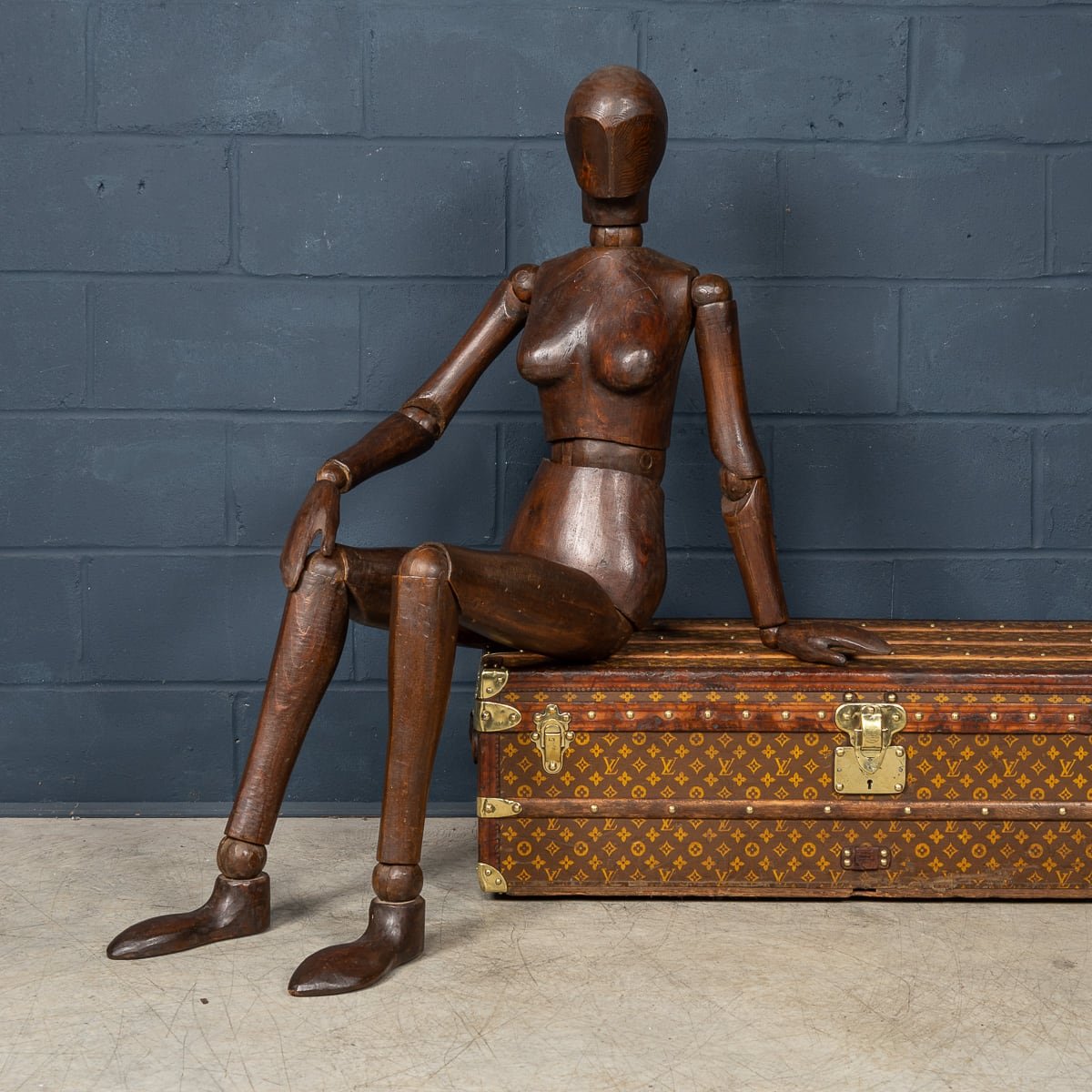
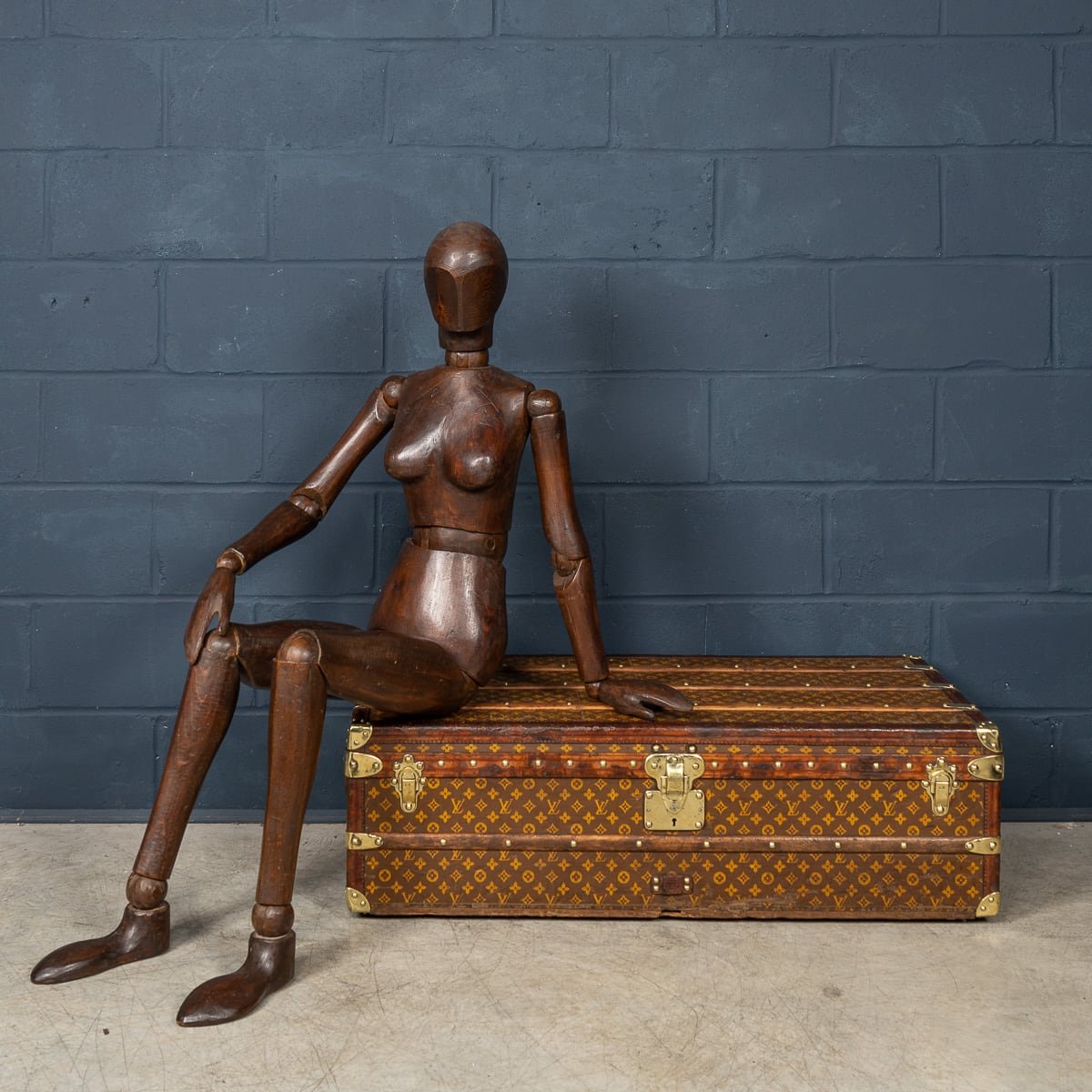
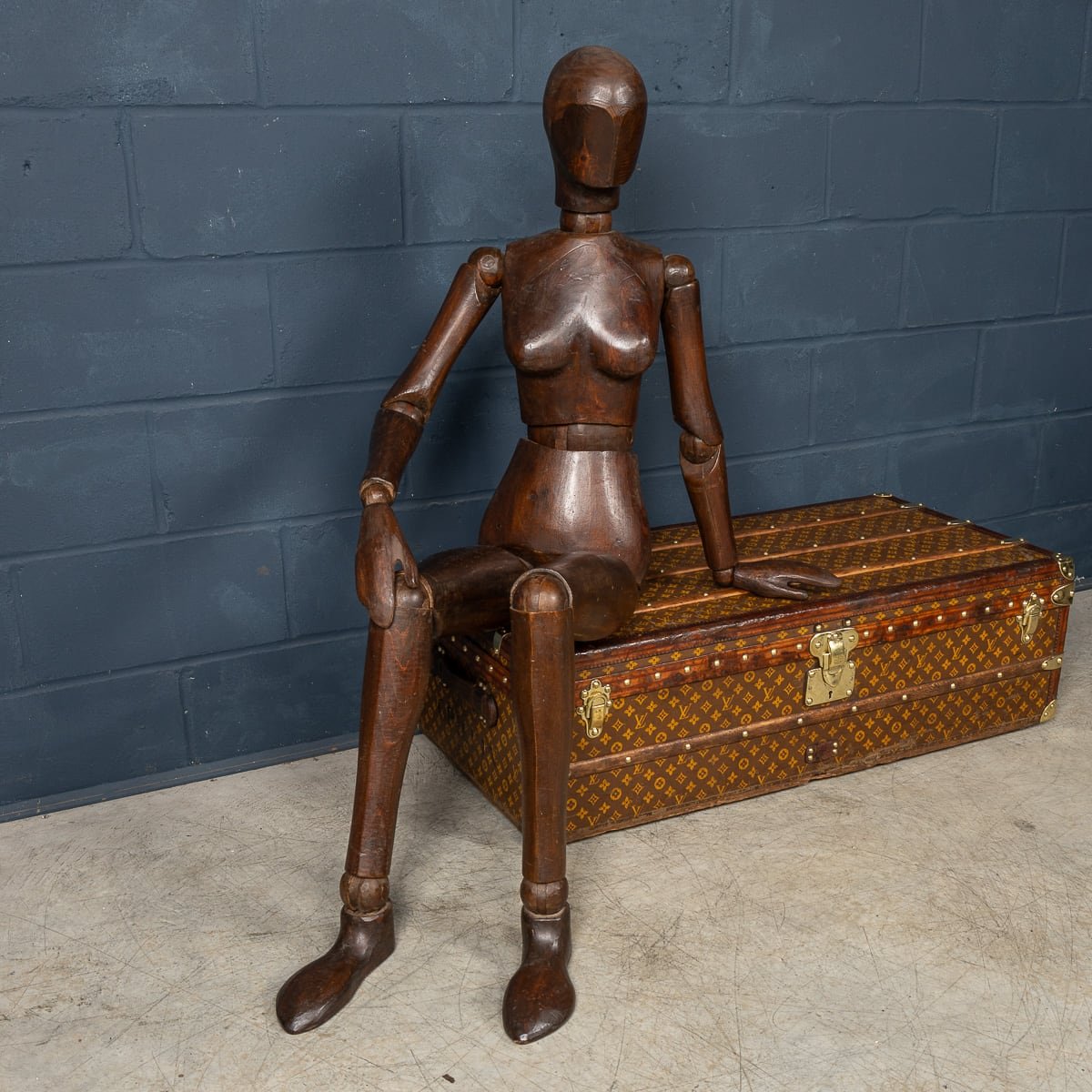
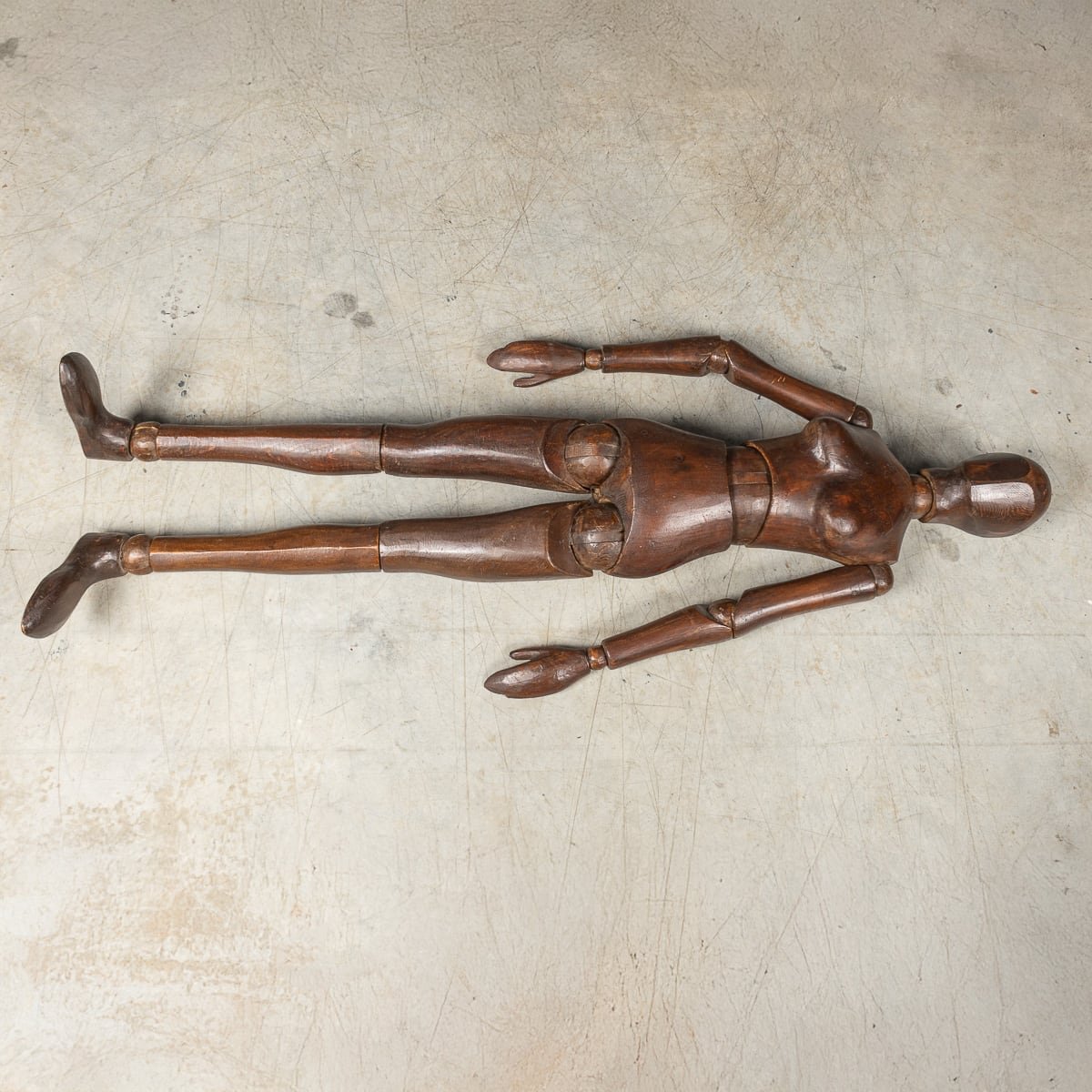
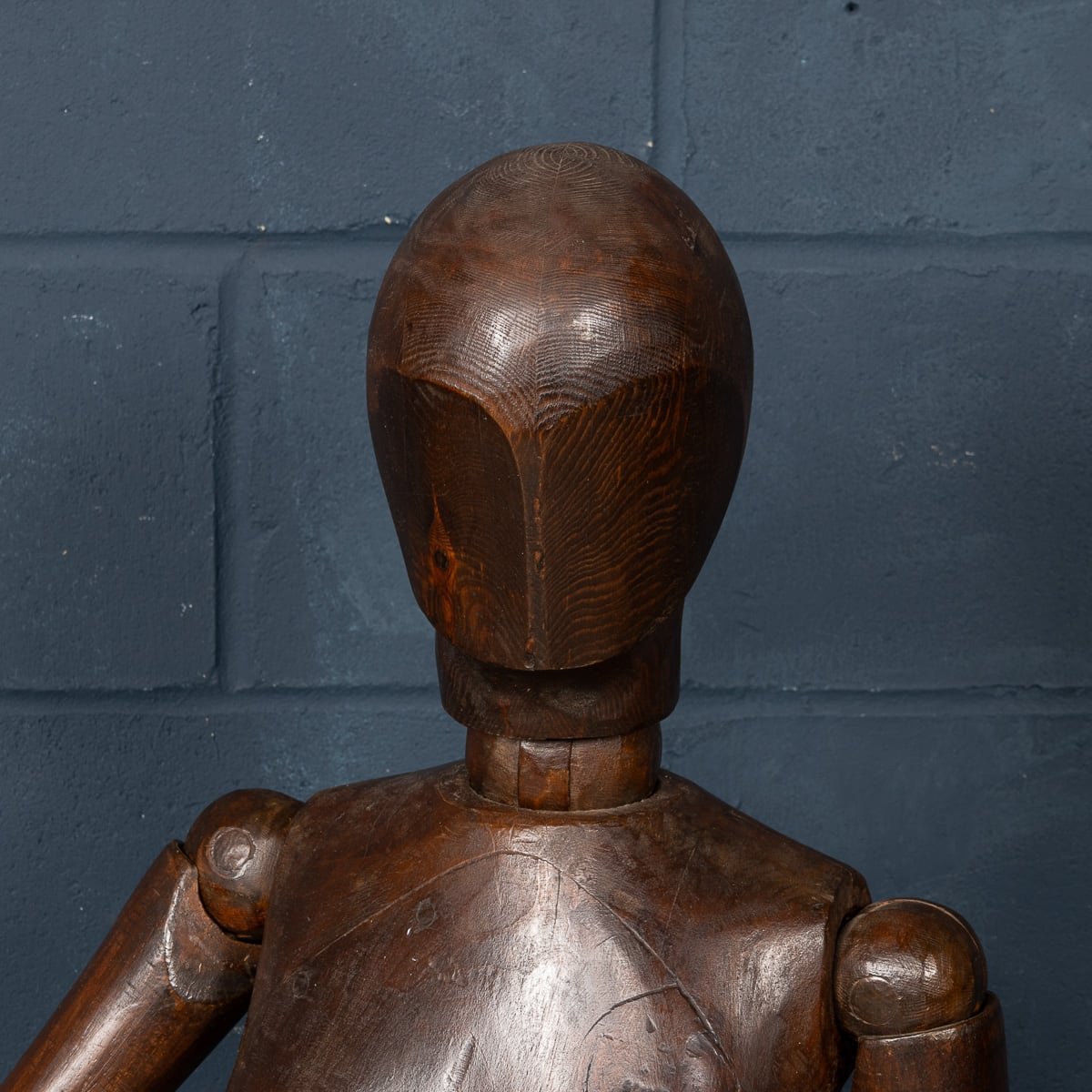
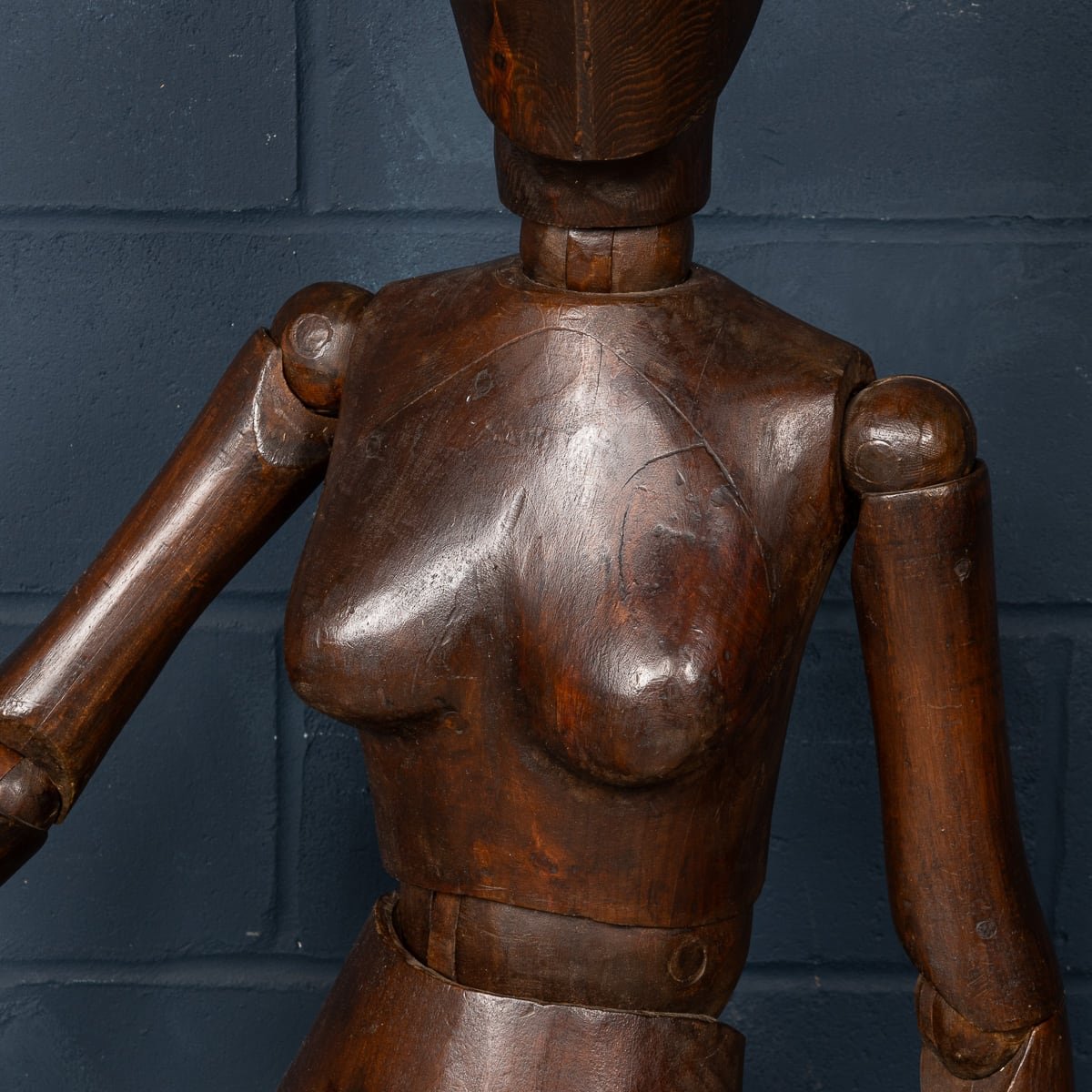


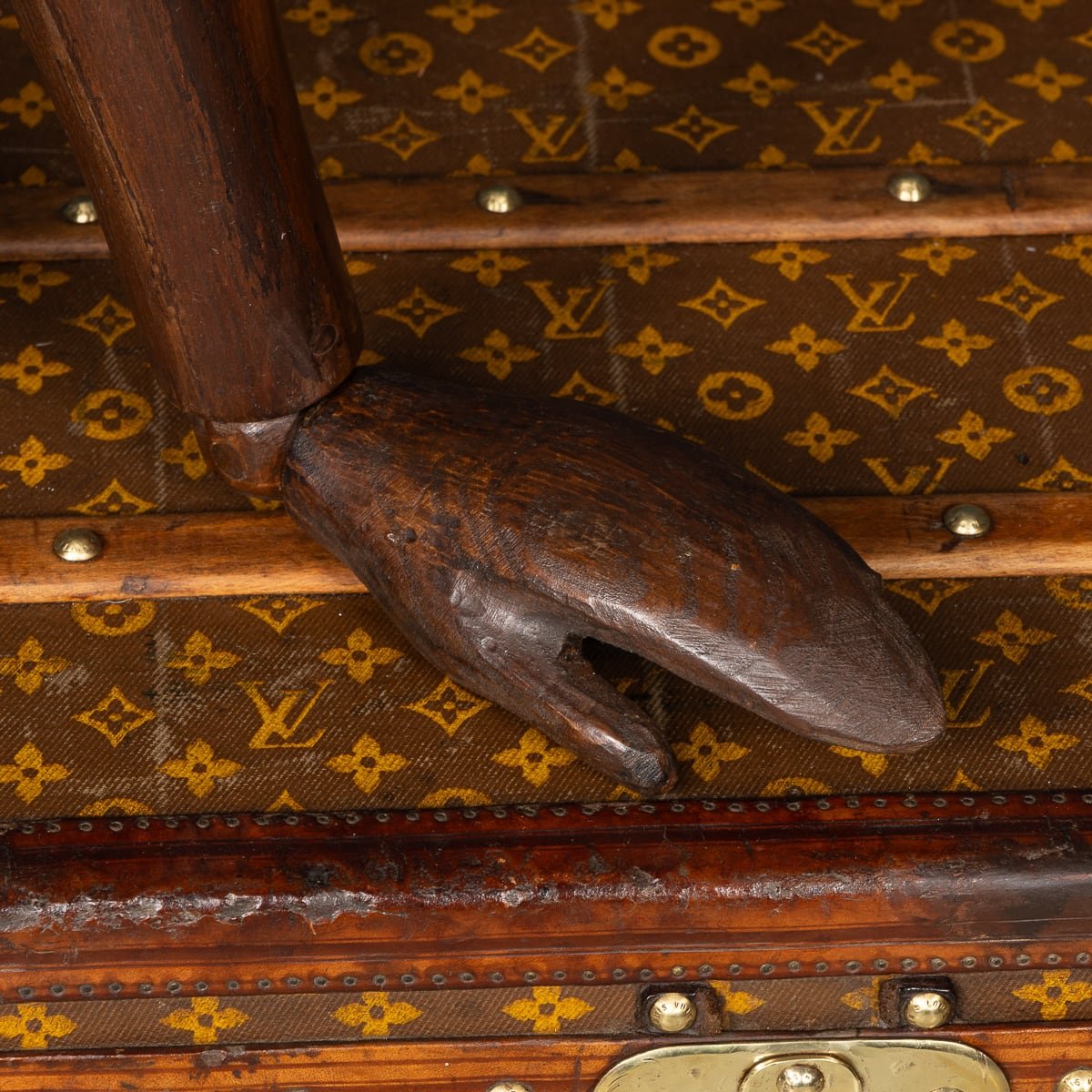

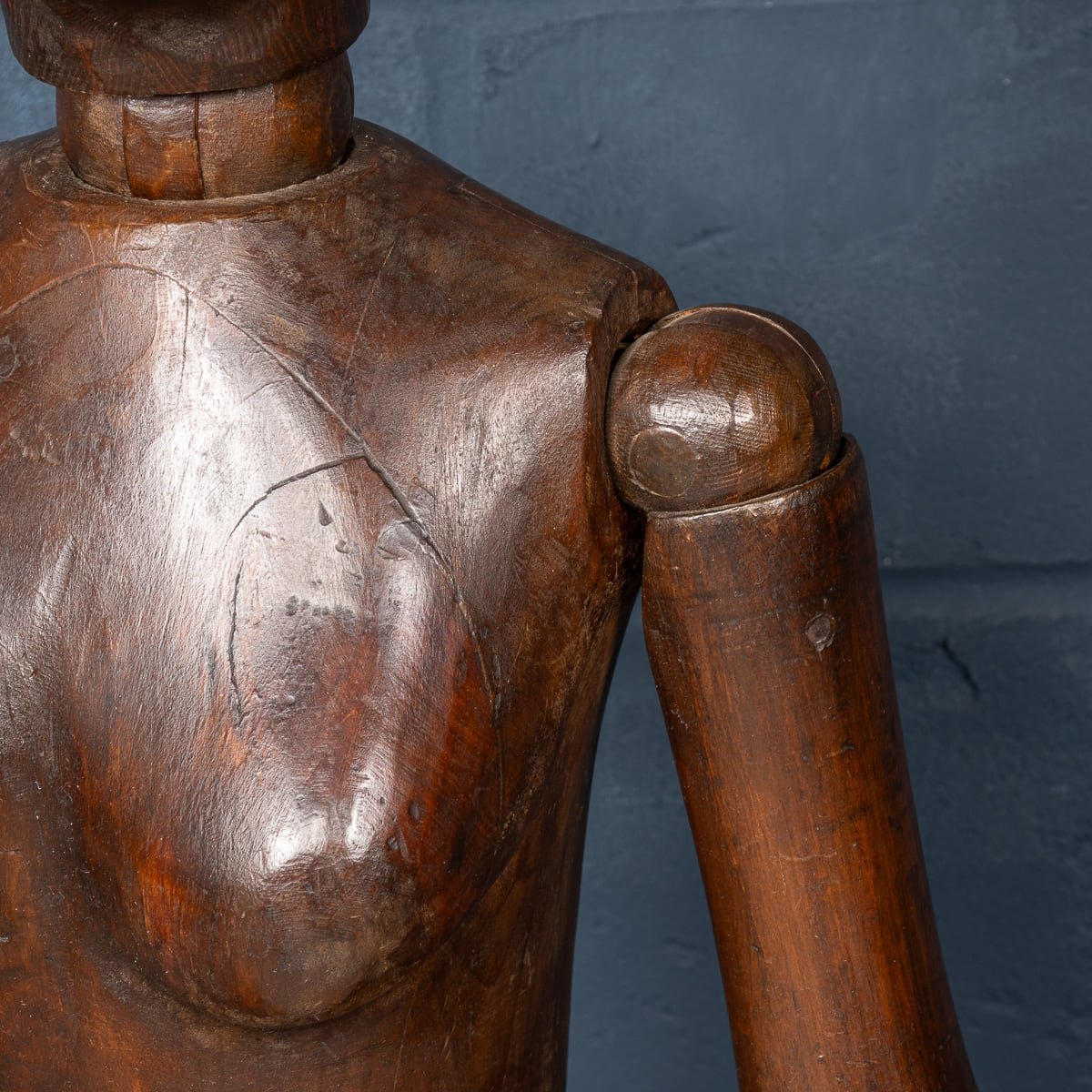
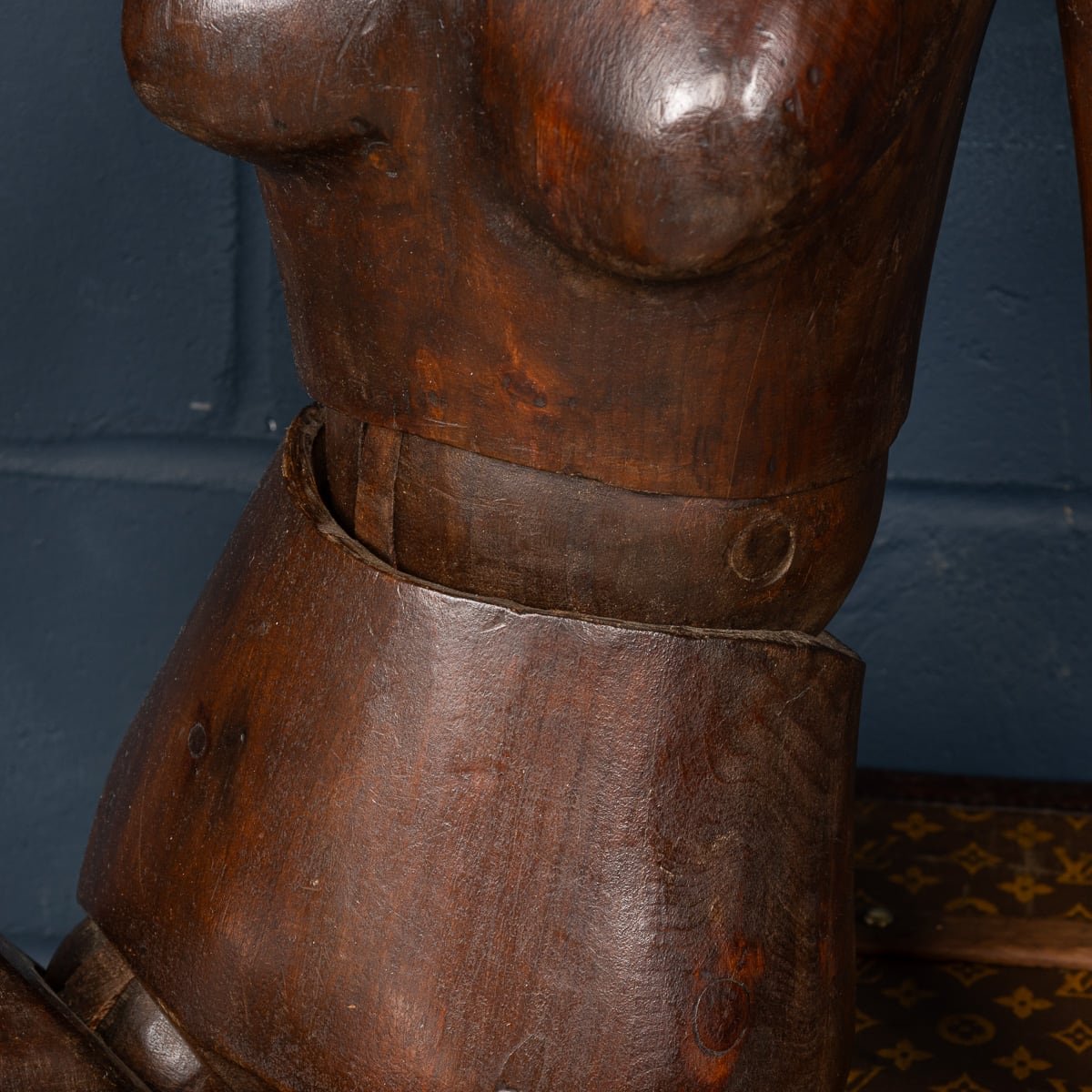
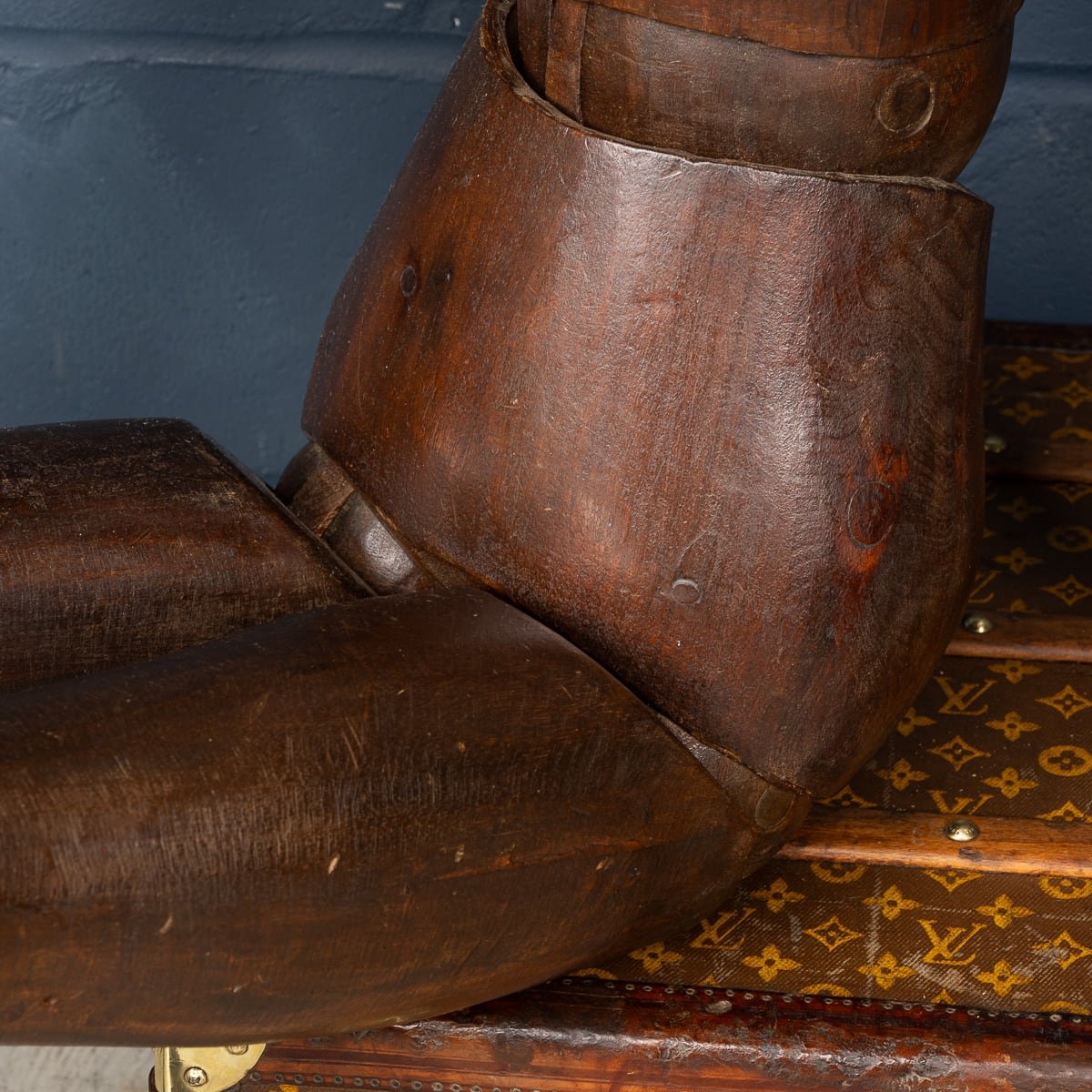


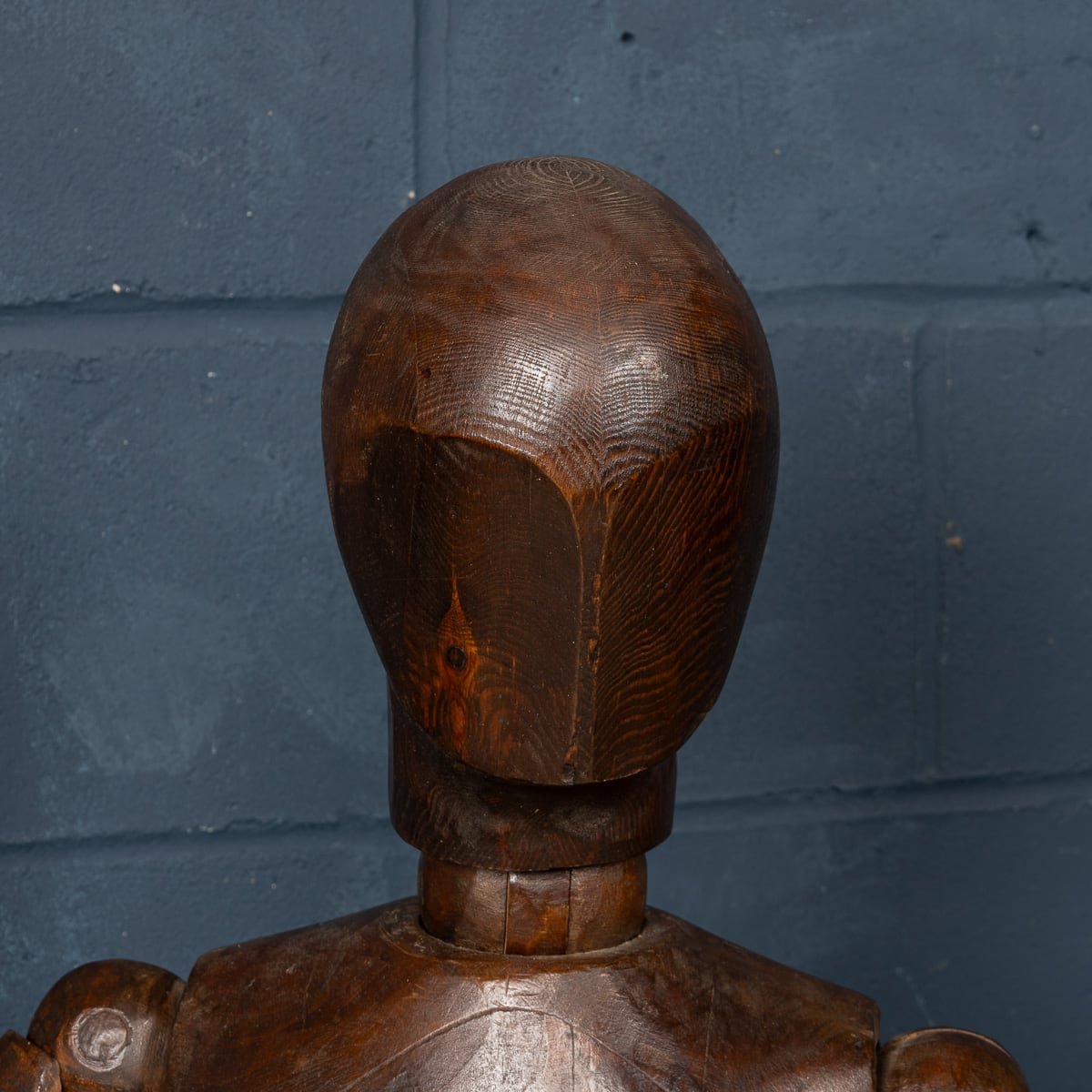
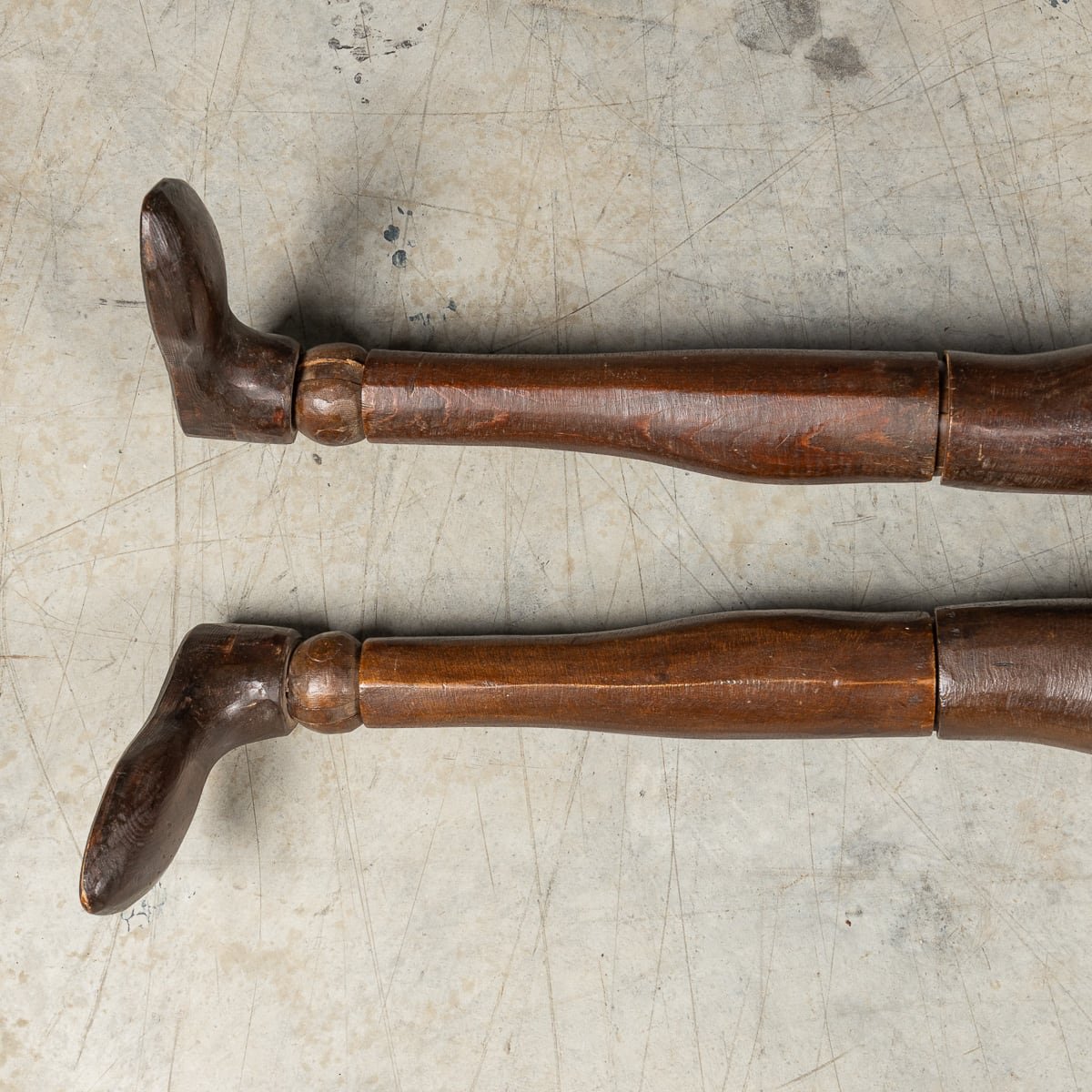
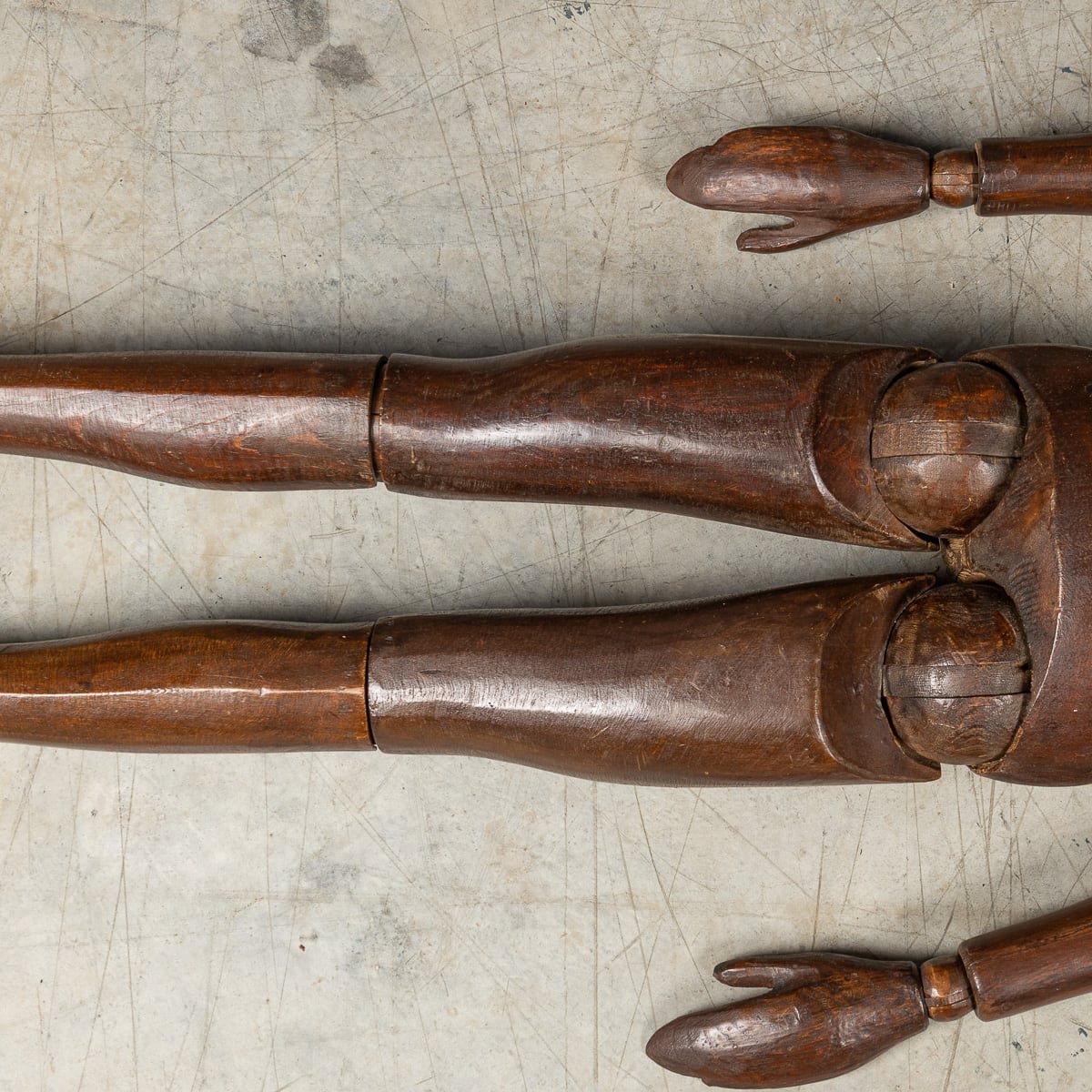
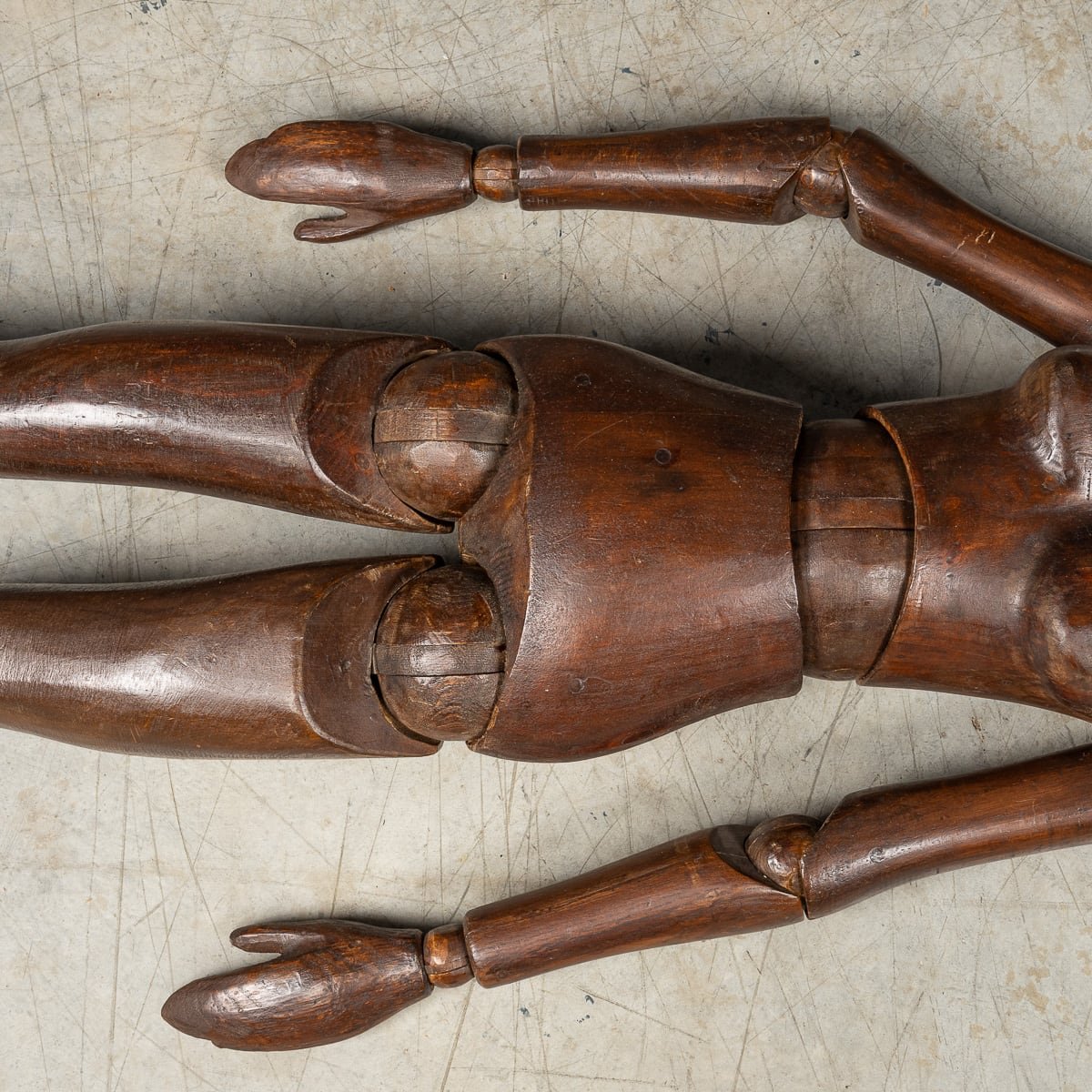
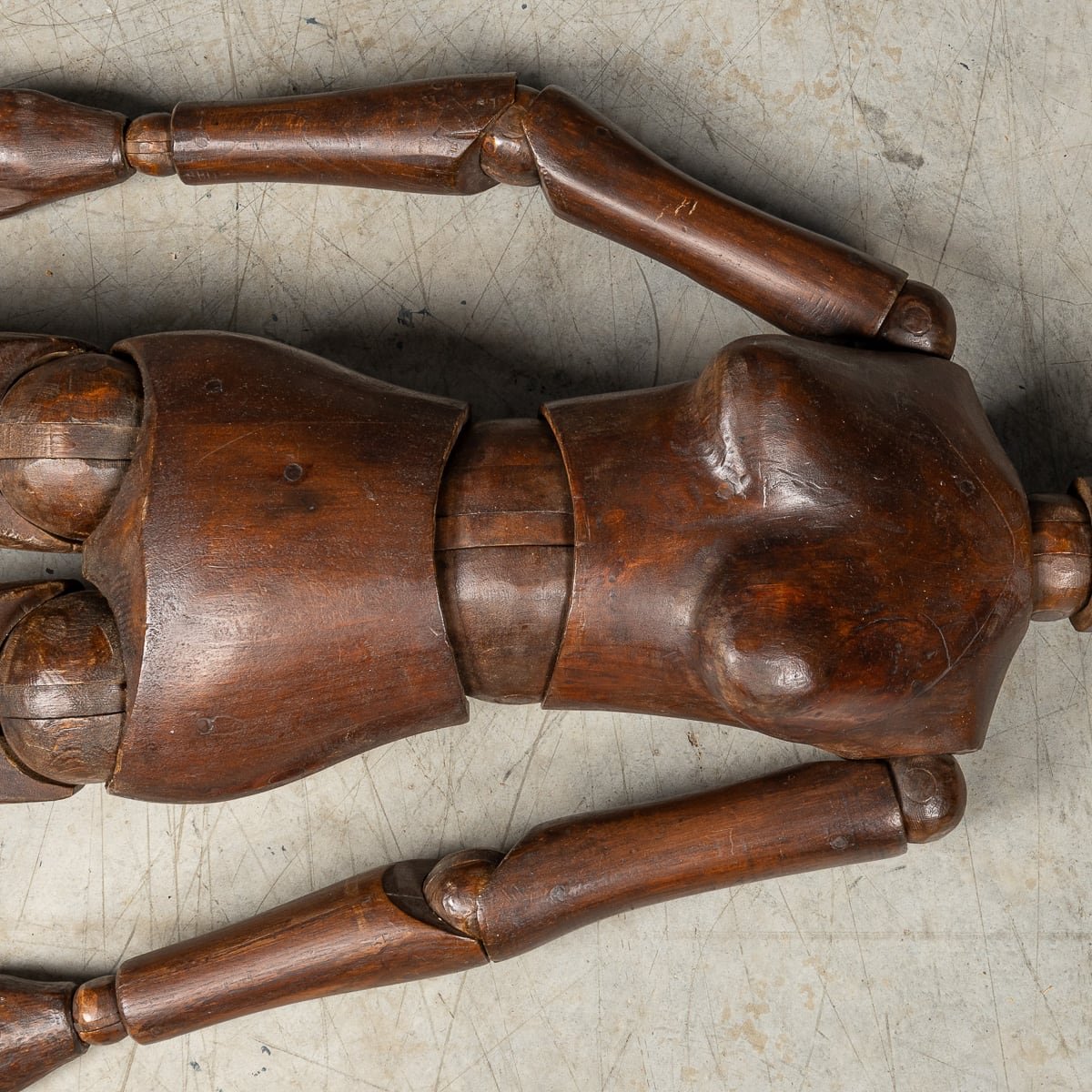
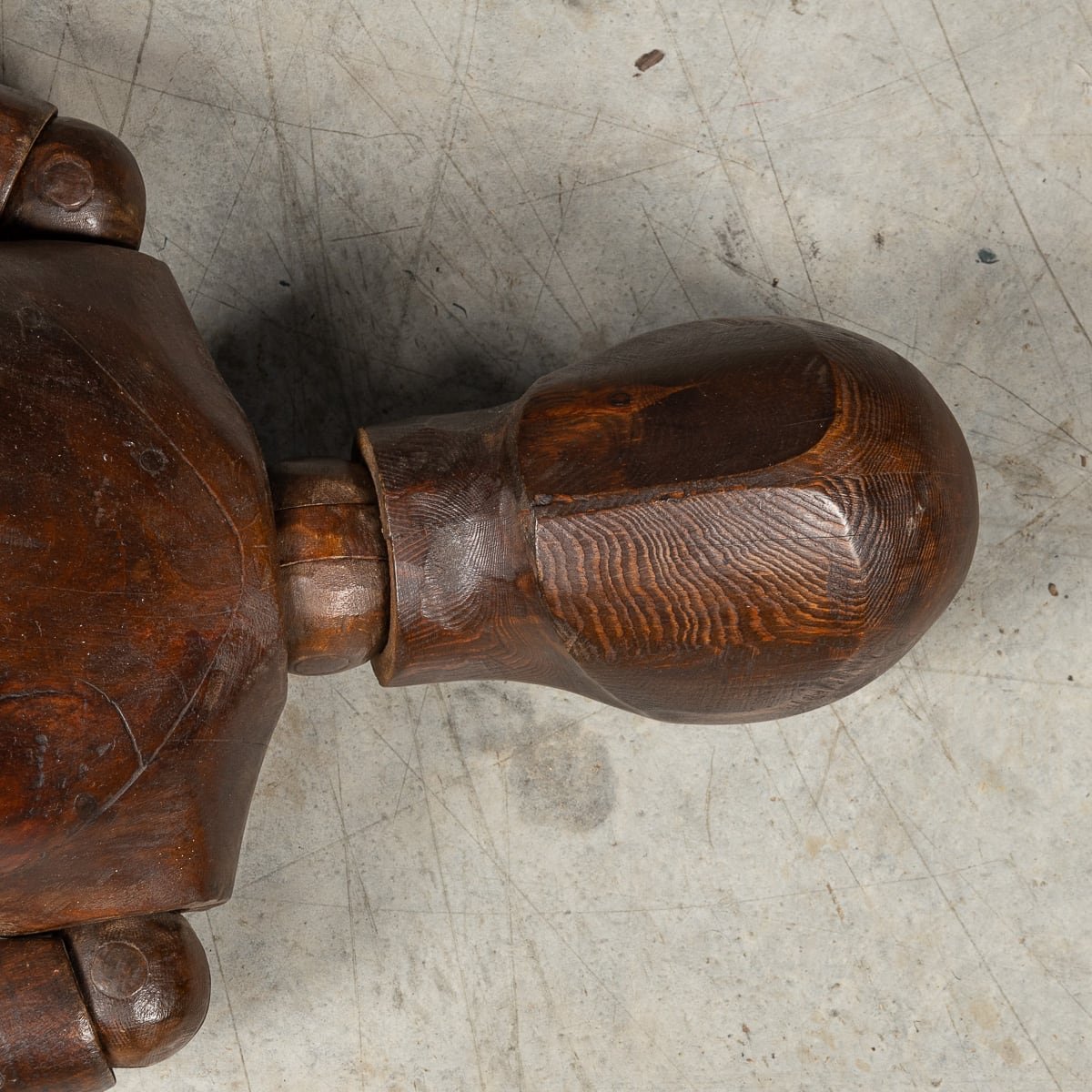

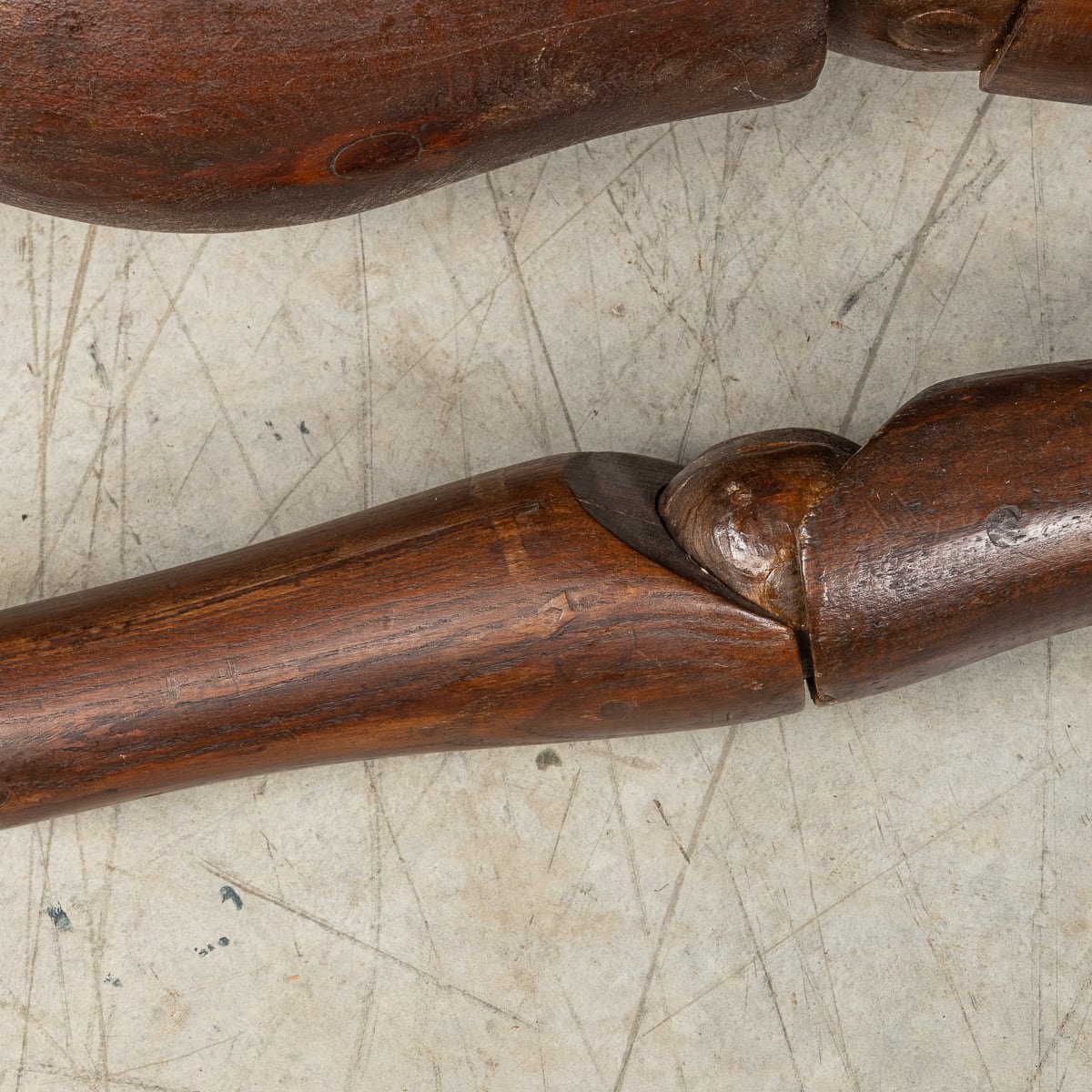



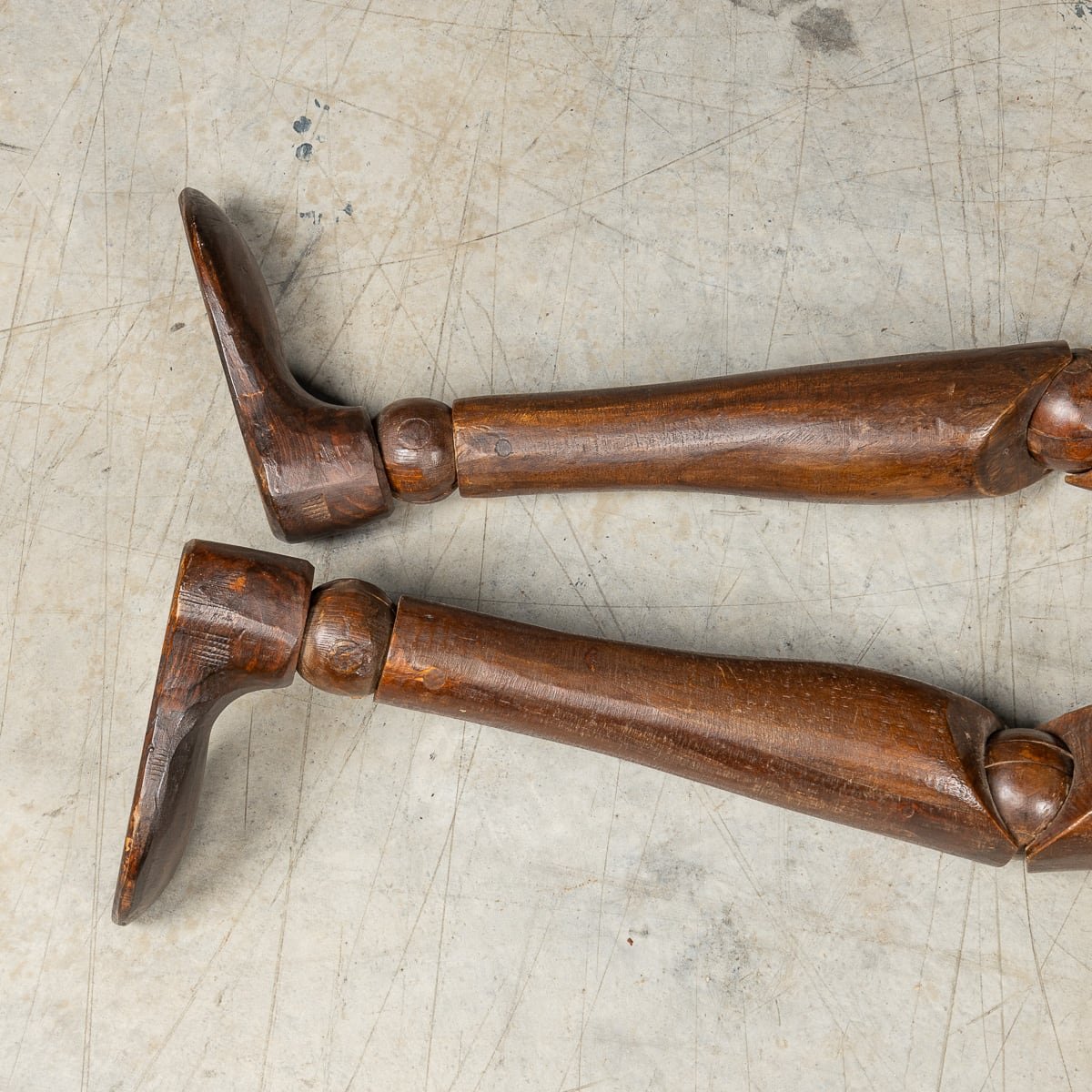

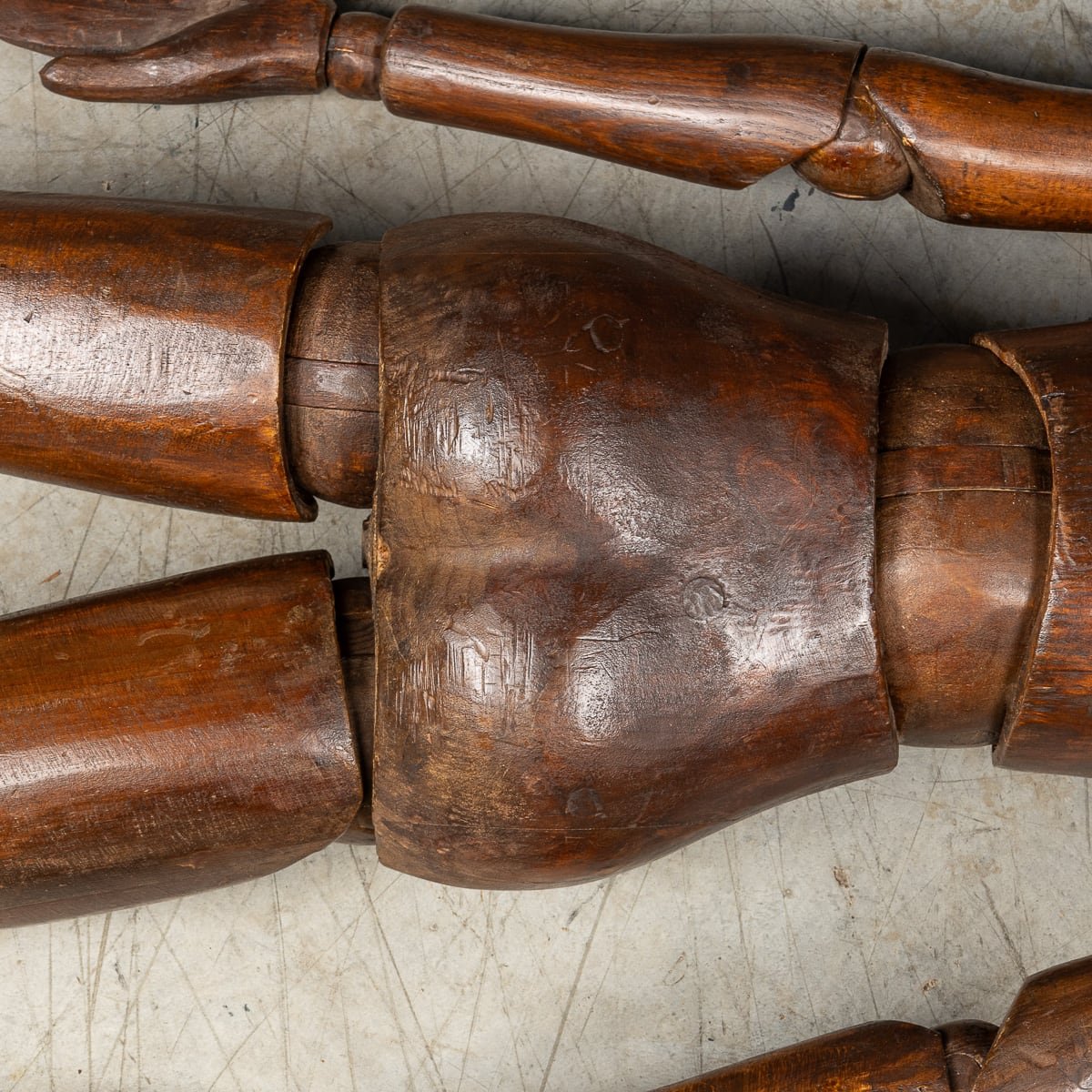


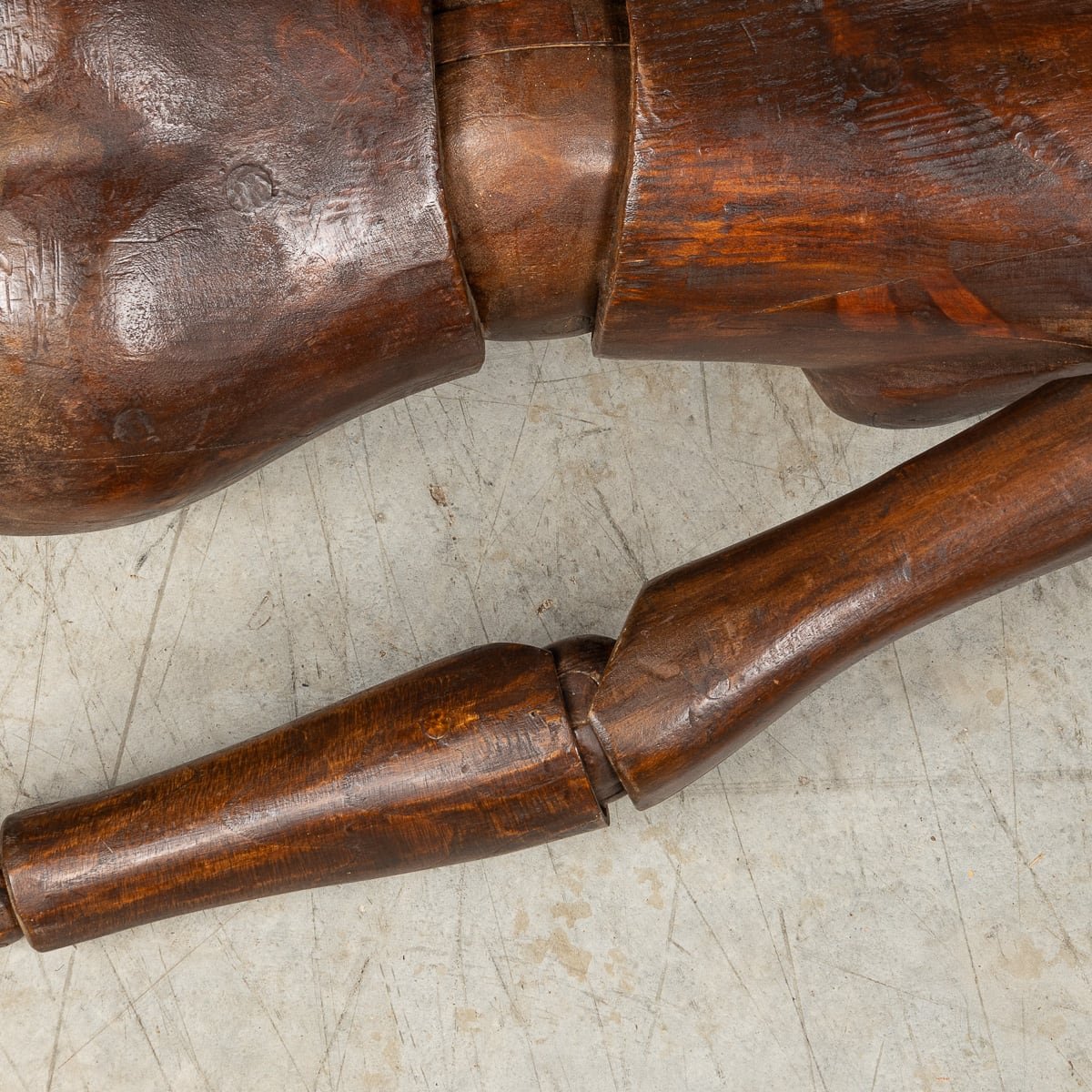


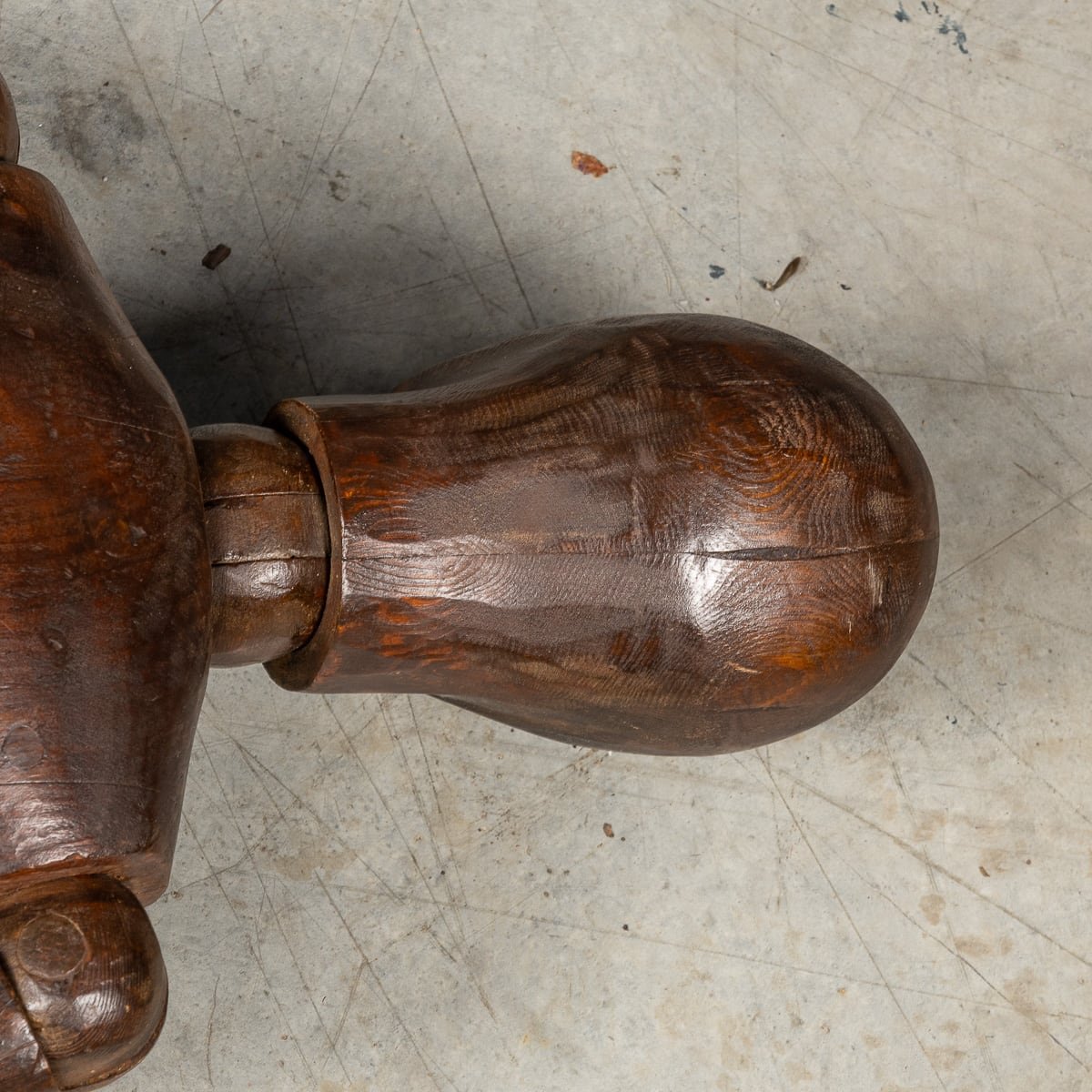
A rare life-size wooden artist's lay figure, Italy, circa 1920
A rare and exceptional life-size wooden artist's lay figure, crafted in Italy during the first half of the 20th century. This striking piece embodies the essence of metaphysical form, with its simplified, articulated structure. Used traditionally as a tool for artists to study human proportions and poses, this figure transcends its practical purpose, becoming a work of art in its own right. Its life-size scale and carefully carved joints blurring the line between utility and sculpture.
The metaphysical art movement, which emerged in Italy in the early 20th century, sought to explore the unseen and the dreamlike through stark, enigmatic compositions. Artists such as Giorgio de Chirico famously depicted empty spaces, mysterious figures, and classical references to provoke a sense of introspection and surreal dislocation. This lay figure aligns beautifully with the ideals of metaphysical art. Its simplified human form reflects a fascination with the abstract and symbolic representation of the body. A remarkable and rare object, this piece resonates with both historical significance and artistic intrigue, making it a captivating addition to any collection.
Articulated figures found among the stocks of art supply merchants, date back several centuries. Ranging in size from under 7 inches to larger than life-size, the earliest and finest examples are of South German origin from the early 16th century. Engineered with an ingenious system of gut bands, these are posable in multiple ways, with movable trunk, limbs, feet and hands, even the individual joints of the fingers. Minute and meticulous attention was paid to every articulation.
The exquisite, earliest boxwood examples of male and female figures were not suitable for rigorous use in artist studios and were likely made for display in Kunstkammer collections, reflecting the interest in the human body during the Renaissance. They also give us a historical milestone in the evolution of small scale carved figures becoming artistic works in their own right, as referenced in the collections of Innsbruck Museum, Austria and Berlin's Bode Museum.
Mannequins, also known a lay figures, became more androgynous from the 18th into the 19th century, by which time they were constructed in pine, linden or walnut with wooden pegs and separate male and female figures were seldom made. A superlative 18th century example is the model used by the sculptor Louis-Francois Roubiliac. Now in the collection of the Museum of London, it has the original box with clothing, male and female, along with hat and wig.
Reaching their peak of manufacture and popularity in France circa 1850, ownership was coveted. "Mannequin Articule’ " would be listed in the inventory of important artists' possessions at that time.
Keenly sought after by collectors, the figures' desirability and rarity is defined by size, quality, condition, antiquity and particularly, the deftness of the carving. Antique lay figures like this one can still be used today in the same way it was being used 100 years ago but they are more likely to be part of private collections for the aficionados of artist memorabilia, Wunderkammer, or simply as decorative items in modern or period interiors. What is certain is that they create a lot of interest and a certain conversation piece in any collection.
Condition: very good overall condition, fantastic patina makes it difficult to determine exactly which type of wood the lay figure is made out of. Some wear to the little fingers, please refer to photographs
Dimensions: 168cm high, 37cm wide at the shoulders, 18cm deep
For additional information please contact us:
Email: info@alessiolorenzi.com
Phone: +44 7701 088 288
REFERENCE: H2460
